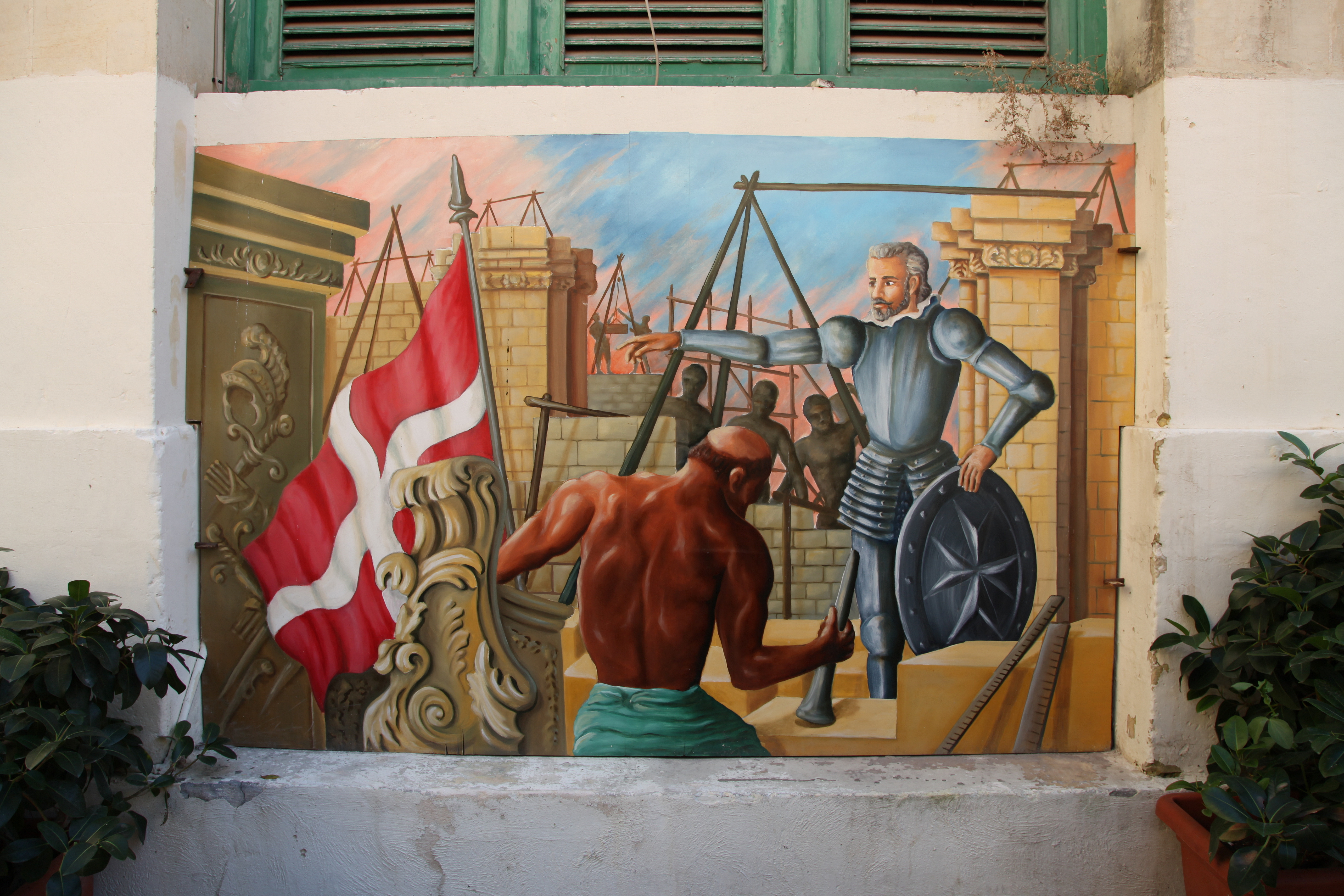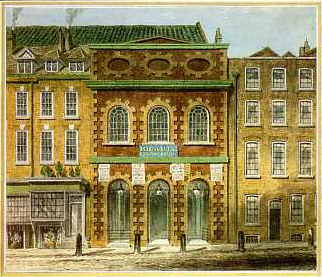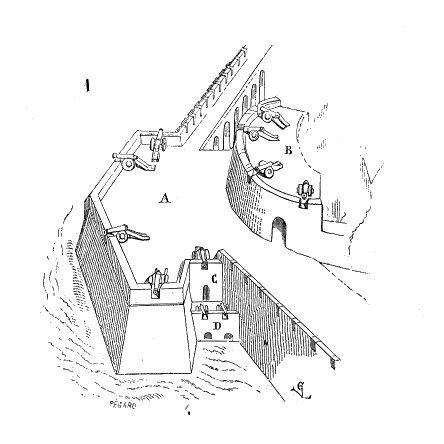|
Fort Manoel
Fort Manoel ( mt, Forti Manoel or ''Fortizza Manoel'') is a star fort on Manoel Island in Gżira, Malta. It was built in the 18th century by the Order of Saint John, during the reign of Grand Master António Manoel de Vilhena, after whom it is named. Fort Manoel is located to the north west of Valletta, and commands Marsamxett Harbour and the anchorage of Sliema Creek. The fort is an example of Baroque architecture, and it was designed with both functionality and aesthetics in mind. After a brief French occupation which began in 1798, the British military took over the fort in 1800, and it remained in use by them until 1964. The fort was severely damaged in World War II, but it was restored in the early 21st century and it is now in good condition. Fort Manoel has been on Malta's tentative list of UNESCO World Heritage Sites since 1998, as part of the Knights' Fortifications around the Harbours of Malta. History Background and failed proposals In the 16th century, the M ... [...More Info...] [...Related Items...] OR: [Wikipedia] [Google] [Baidu] |
Manoel Island
Manoel Island ( mt, Il-Gżira Manoel), formerly known as Bishop's Island ( mt, Il-Gżira tal-Isqof, it, Isola del Vescovo) or the ''Isolotto'', is a small island which forms part of the municipality of Gżira in Marsamxett Harbour, Malta. It is named after the Portuguese Grand Master António Manoel de Vilhena, who built a fort on the island in the 1720s. Geography Manoel Island is a low, rather flat hill, shaped roughly like a leaf. It is located in the middle of Marsamxett Harbour, with Lazzaretto Creek to its south and Sliema Creek to its north. The island is connected to mainland Malta by a bridge. The whole island can be viewed from the bastions of the capital Valletta. History In 1570, the island was acquired by the Cathedral Chapter of Mdina and it became the property of the Bishop of Malta. It was therefore called ''l'Isola del Vescovo'' or il-''Gżira tal-Isqof'' in Maltese (the Bishop's Island). In 1592, a quarantine hospital known as the Lazzaretto was built duri ... [...More Info...] [...Related Items...] OR: [Wikipedia] [Google] [Baidu] |
Valletta
Valletta (, mt, il-Belt Valletta, ) is an Local councils of Malta, administrative unit and capital city, capital of Malta. Located on the Malta (island), main island, between Marsamxett Harbour to the west and the Grand Harbour to the east, its population within administrative limits in 2014 was 6,444. According to the data from 2020 by Eurostat, the Functional Urban Area and metropolitan region covered the whole island and has a population of 480,134. Valletta is the southernmost capital of Europe, and at just , it is the European Union's smallest capital city. Valletta's 16th-century buildings were constructed by the Hospitaller Malta, Knights Hospitaller. The city was named after Jean Parisot de Valette, who succeeded in defending the island from an Ottoman invasion during the Great Siege of Malta. The city is Baroque architecture, Baroque in character, with elements of Mannerist architecture#Mannerist architecture, Mannerist, Neoclassical architecture, Neo-Classical and Mo ... [...More Info...] [...Related Items...] OR: [Wikipedia] [Google] [Baidu] |
Bastion
A bastion or bulwark is a structure projecting outward from the curtain wall of a fortification, most commonly angular in shape and positioned at the corners of the fort. The fully developed bastion consists of two faces and two flanks, with fire from the flanks being able to protect the curtain wall and the adjacent bastions. Compared with the medieval fortified towers they replaced, bastion fortifications offered a greater degree of passive resistance and more scope for ranged defence in the age of gunpowder artillery. As military architecture, the bastion is one element in the style of fortification dominant from the mid 16th to mid 19th centuries. Evolution By the middle of the 15th century, artillery pieces had become powerful enough to make the traditional medieval round tower and curtain wall obsolete. This was exemplified by the campaigns of Charles VII of France who reduced the towns and castles held by the English during the latter stages of the Hundred Years War, ... [...More Info...] [...Related Items...] OR: [Wikipedia] [Google] [Baidu] |
Carlos De Grunenbergh
Carlos de Grunenbergh, also known as Carlo Grunenberg (died 1696), was a Flemish architect and military engineer active in the late 17th century. He mainly designed fortifications in Sicily and Malta. He was also a member of the Order of Saint John. Career In the mid-17th century, Grunenbergh worked in Spain with his brother Ferdinand. He was eventually appointed as the military engineer of the Viceroy of Sicily, and he designed or modified various fortifications in the last few decades of the century, including the walls of Augusta, Messina and Catania. In 1681, Grunenbergh was invited to Malta by Gregorio Carafa, the Grand Master of the Order of Saint John. He made a number of improvements and modifications to the islands' fortifications. The improvements included the addition of batteries to the fortifications of Valletta and Senglea, and the construction of the Carafa Enceinte around Fort Saint Elmo. Grunenbergh came to Malta again in 1687, and designed and paid for the c ... [...More Info...] [...Related Items...] OR: [Wikipedia] [Google] [Baidu] |
Hornwork
A hornwork is an element of the Italian bastion system of fortification. Its face is flanked with a pair of demi-bastions. It is distinguished from a crownwork, because crownworks contain full bastions at their centers. They are both outwork An outwork is a minor fortification built or established outside the principal fortification limits, detached or semidetached. Outworks such as ravelins, lunettes (demilunes), flèches and caponiers to shield bastions and fortification curtains ...s. References Fortifications {{Fort-stub ... [...More Info...] [...Related Items...] OR: [Wikipedia] [Google] [Baidu] |
Antonio Maurizio Valperga
Antonio is a masculine given name of Etruscan origin deriving from the root name Antonius. It is a common name among Romance language-speaking populations as well as the Balkans and Lusophone Africa. It has been among the top 400 most popular male baby names in the United States since the late 19th century and has been among the top 200 since the mid 20th century. In the English language it is translated as Anthony, and has some female derivatives: Antonia, Antónia, Antonieta, Antonietta, and Antonella'. It also has some male derivatives, such as Anthonio, Antón, Antò, Antonis, Antoñito, Antonino, Antonello, Tonio, Tono, Toño, Toñín, Tonino, Nantonio, Ninni, Totò, Tó, Tonini, Tony, Toni, Toninho, Toñito, and Tõnis. The Portuguese equivalent is António (Portuguese orthography) or Antônio (Brazilian Portuguese). In old Portuguese the form Antão was also used, not just to differentiate between older and younger but also between more and less important. In Galician th ... [...More Info...] [...Related Items...] OR: [Wikipedia] [Google] [Baidu] |
Scipione Campi
''Scipione'' ( HWV 20), also called ''Publio Cornelio Scipione'', is an opera seria in three acts, with music composed by George Frideric Handel for the Royal Academy of Music in 1726. The librettist was Paolo Antonio Rolli. Handel composed ''Scipione'' whilst in the middle of writing ''Alessandro''. It is based on the life of the Roman general Scipio Africanus. Its slow march is the regimental march of the Grenadier Guards and is known for being played at London Metropolitan Police passing out ceremonies. Performance history ''Scipione'' had its premiere on 12 March 1726 at The King's Theatre, Haymarket. Handel revived the opera in 1730, but it did not receive another UK production until October 1967, by the Handel Opera Society. In Germany, ''Scipione'' was revived at the Göttingen International Handel Festival in 1937 and at the annual Handel Festival in Halle in 1965.Dean, Winton, "Handel's ''Scipione'' (October 1967). ''The Musical Times'', 108 (1496): pp. 902–904. Wit ... [...More Info...] [...Related Items...] OR: [Wikipedia] [Google] [Baidu] |
Francesco Collignon
Francesco, the Italian (and original) version of the personal name "Francis", is the most common given name among males in Italy. Notable persons with that name include: People with the given name Francesco * Francesco I (other), several people * Francesco Barbaro (other), several people * Francesco Bernardi (other), several people *Francesco di Giorgio Martini (1439-1501), Italian architect, engineer and painter * Francesco Berni (1497–1536), Italian writer * Francesco Canova da Milano (1497–1543), Italian lutenist and composer * Francesco Primaticcio (1504–1570), Italian painter, architect, and sculptor * Francesco Albani (1578–1660), Italian painter * Francesco Borromini (1599–1667), Swiss sculptor and architect * Francesco Cavalli (1602–1676), Italian composer * Francesco Maria Grimaldi (1618–1663), Italian mathematician and physicist * Francesco Bianchini (1662–1729), Italian philosopher and scientist * Francesco Galli Bibiena (1659 ... [...More Info...] [...Related Items...] OR: [Wikipedia] [Google] [Baidu] |
Cavalier (fortification)
A cavalier is a fortification which is built within a larger fortification, and which is higher than the rest of the work. It usually consists of a raised platform within a fort or bastion, so as to be able to fire over the main parapet without interfering with the fire of the latter. Through the use of cavaliers, a greater volume of fire can be obtained, but its great height also makes it an easy target for a besieger's guns. There are two types of cavaliers: *Common cavalier – a raised gun platform without any additional defensive features *Defensible cavalier – a raised gun platform surrounded by a ditch. If the ditch cuts across the bastion's terreplein and is supported by cuts, the cavalier can also be considered as a retrenchment. Gallery Malta - Birgu - Ix-Xatt tal-Birgu - Fort Saint Angelo (MSTHC) 02 ies.jpg, Ferramolino's Cavalier, Fort St. Angelo, Birgu, Malta Malta ( , , ), officially the Republic of Malta ( mt, Repubblika ta' Malta ), is an island countr ... [...More Info...] [...Related Items...] OR: [Wikipedia] [Google] [Baidu] |
World Heritage Site
A World Heritage Site is a landmark or area with legal protection by an international convention administered by the United Nations Educational, Scientific and Cultural Organization (UNESCO). World Heritage Sites are designated by UNESCO for having cultural, historical, scientific or other form of significance. The sites are judged to contain " cultural and natural heritage around the world considered to be of outstanding value to humanity". To be selected, a World Heritage Site must be a somehow unique landmark which is geographically and historically identifiable and has special cultural or physical significance. For example, World Heritage Sites might be ancient ruins or historical structures, buildings, cities, deserts, forests, islands, lakes, monuments, mountains, or wilderness areas. A World Heritage Site may signify a remarkable accomplishment of humanity, and serve as evidence of our intellectual history on the planet, or it might be a place of great natural beauty. A ... [...More Info...] [...Related Items...] OR: [Wikipedia] [Google] [Baidu] |
UNESCO
The United Nations Educational, Scientific and Cultural Organization is a specialized agency of the United Nations (UN) aimed at promoting world peace and security through international cooperation in education, arts, sciences and culture. It has 193 member states and 12 associate members, as well as partners in the non-governmental, intergovernmental and private sector. Headquartered at the World Heritage Centre in Paris, France, UNESCO has 53 regional field offices and 199 national commissions that facilitate its global mandate. UNESCO was founded in 1945 as the successor to the League of Nations's International Committee on Intellectual Cooperation.English summary). Its constitution establishes the agency's goals, governing structure, and operating framework. UNESCO's founding mission, which was shaped by the Second World War, is to advance peace, sustainable development and human rights by facilitating collaboration and dialogue among nations. It pursues this objective t ... [...More Info...] [...Related Items...] OR: [Wikipedia] [Google] [Baidu] |



.jpg)



